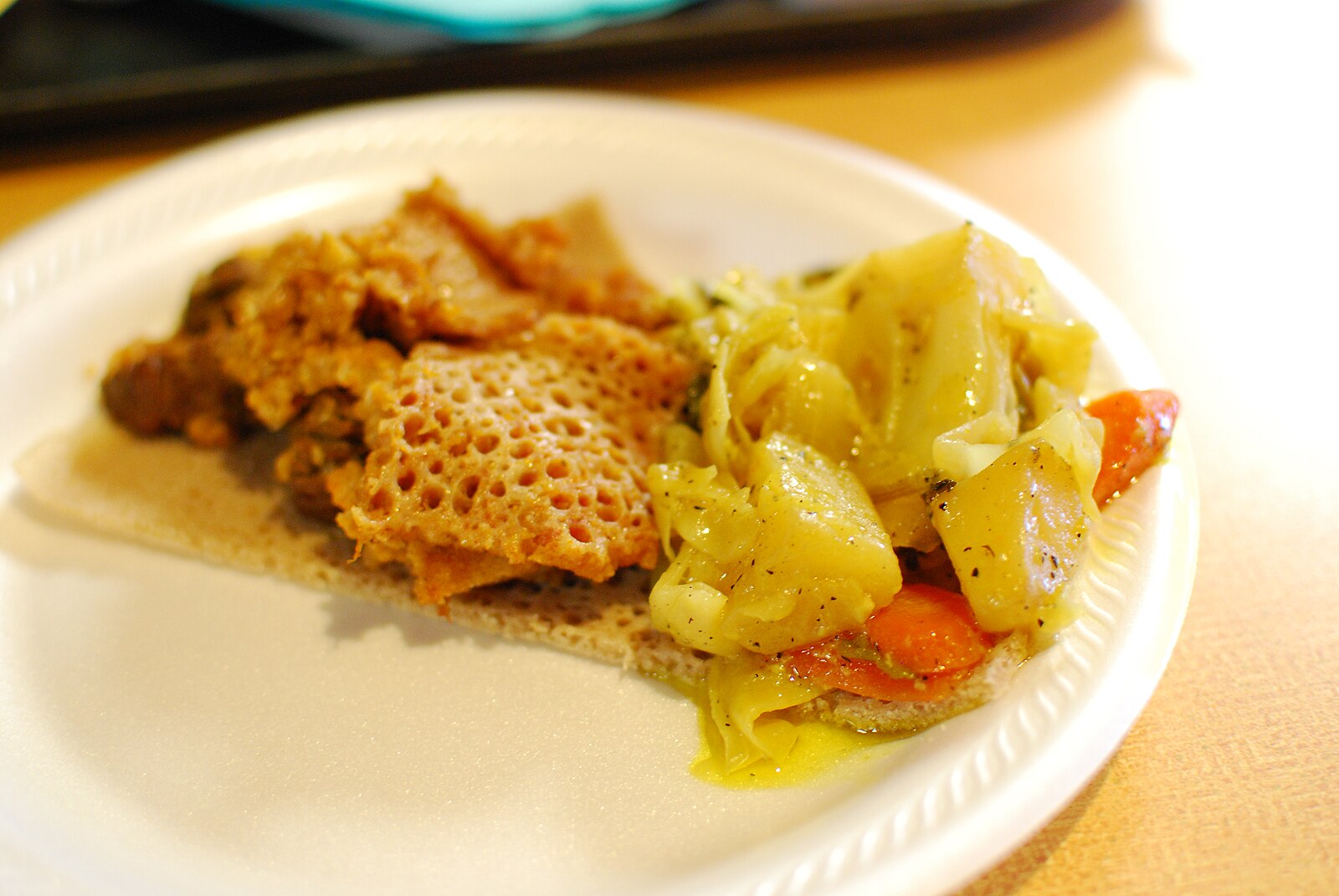Firfir (ፍርፍር)
- Prep time: 15 minutes
- Cook time: 10 minutes
- Total time: 25 minutes
- Servings: 2
- Nutrition: (Estimated per serving) Calories: 400 kcal | Carbohydrates: 60g | Protein: 10g | Fat: 15g
- Like this recipe? Share your thoughts and leave a rating!
Firfir is a quintessential Ethiopian dish, a flavorful mix of shredded injera (a spongy, sourdough flatbread) and a spicy, aromatic sauce. While not a traditional “noodle” in the common sense, the shredded injera takes on a noodle-like role, absorbing the rich, complex flavors of the berbere spice blend and savory broth. It is a hearty and deeply satisfying meal, most often enjoyed for breakfast.
Ingredients (Makes 2 servings)
- For the Sauce:
- 2 tbsp niter kibbeh (spiced clarified butter) or unsalted butter
- 1 large shallot or 1/2 onion, finely chopped
- 2 cloves garlic, minced
- 1 tbsp berbere spice mix
- 1/2 tsp ginger powder
- 1/2 cup vegetable broth or water
- For the Firfir:
- 2 large pieces of injera, torn into bite-sized pieces
- For Garnish (Optional):
- A few sprigs of fresh cilantro or sliced green onions
Instructions
- Prepare the Sauce: In a skillet over medium heat, melt the niter kibbeh. Add the chopped shallot and cook until soft and translucent, about 3-4 minutes. Add the minced garlic and cook for another minute until fragrant.
- Add Spices: Reduce the heat to low and stir in the berbere spice mix and ginger powder. Cook for a minute, stirring constantly to toast the spices and release their aroma.
- Make the Gravy: Pour in the vegetable broth or water. Increase the heat to medium and bring the sauce to a gentle simmer, stirring to combine everything.
- Add the Injera: Add the torn pieces of injera to the skillet. Use tongs to gently toss the injera with the sauce until every piece is fully coated. Cook for about 2 minutes, allowing the injera to absorb the liquid and soften.
- Serve: Transfer the firfir to a plate. Garnish with fresh cilantro or green onions and serve immediately.
Tips, Variations, and Cultural Notes
Preparation Tips & Ingredient Notes
- The Magic of Berbere: Berbere is the heart of this dish. This Ethiopian spice blend is made with a mix of chili peppers, garlic, ginger, basil, and other spices. You can find it at specialty African or international markets.
- Using Niter Kibbeh: This spiced butter is a crucial component of Ethiopian cuisine. It adds a complex, aromatic flavor that regular butter can’t replicate. You can find it at African grocery stores or make your own.
- Injera: Injera is a sourdough flatbread with a slightly spongy, crepe-like texture. It’s essential for soaking up the sauce. You can purchase it ready-made or make it yourself from teff flour.
Regional Variations & Modern Twists
- Yetsom Firfir: A vegan version of the dish, made with a spicy tomato sauce and without niter kibbeh or meat, commonly eaten during fasting periods.
- With Protein: For a heartier meal, you can add cooked beef (siga) or chicken (doro) to the sauce before adding the injera.
History & Cultural Significance
- Origins: Firfir is a dish with a rich history tied to the practice of avoiding food waste in Ethiopian households. It was a way to use leftover injera from a previous meal.
- A Communal Dish: In Ethiopia, food is often eaten communally. Firfir is typically served on a large platter and shared among family and friends, eaten with one’s right hand. Its preparation and consumption are deeply rooted in social and cultural traditions.
